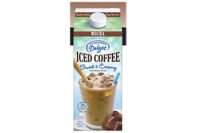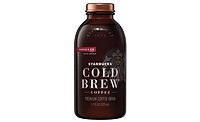The gourmet coffee market has perked up this year, according to the National Coffee Association of USA Inc. (NCA). Approximately 34 percent of American adults drink gourmet coffee beverages daily, up 3 percentage points from 2013, according to the New York-based association’s “National Coffee Drinking Trends” market research study, which was released in March. Conversely, non-gourmet coffee drinking dropped 4 percentage points to 35 percent, it reports.
Espresso-based beverages accounted for much of this increase in gourmet coffee beverage consumption, the NCA notes. Eighteen percent of American adults consume espresso-based coffee beverages daily, compared with 13 percent last year. However, consumption of gourmet coffee, which includes espresso-based beverages and regular coffee made with gourmet coffee beans, was flat at 19 percent.
This trend is visible in the single-serve coffee segment. The J.M. Smucker Co.’s Folgers Gourmet Selections single-cup coffees grew more than 8 percent in the 52 weeks ending April 20 in U.S. multi-outlets compared with the prior-year period, according to Chicago-based Information Resources Inc. (IRI).
The company recently announced that it increased the list price for the majority of its packaged coffee products sold in the United States, primarily consisting of items sold under the Folgers and Dunkin’ Donuts brands. Prices increased an average of 9 percent on impacted items in response to sustained increases in green coffee costs; however, its K-Cup single-cup packs were excluded from the price increase.
Interest in coffee in general is visible across most formats within the category, said Dana LaMendola, beverage analyst for Chicago-based Euromonitor International, in Beverage Industry’s September 2013 article. From 2012 to 2013, fresh coffee beans grew 3.5 per-cent in U.S. retail value, fresh ground coffee grew 6.5 percent, and fresh ground coffee pods grew 33.8 percent, according to Euromonitor data.
Ground roasted coffee remains the most popular type of coffee, making up 73.6 percent of the revenue in the coffee market, according to IBISWorld’s March 2014 report “Coffee Production in the US.” In fact, according to 2013 data, 62.3 percent of respondents to a 2013 NCA survey reported drinking traditionally brewed coffee at home, the Santa Monica, Calif.-based market research firm reports.
Despite ground coffee’s market dominance, IBISWorld expects that its popularity will decline as the premiumization trend influences con-sumers to choose whole coffee beans for fresh grinding at home. Although not as convenient as purchasing ground coffee, whole beans often are preferred by coffee connoisseurs because freshly grinding the beans at home brings out the flavor of the beans, it says.
From 2008 to 2013, the whole-bean coffee format gradually increased in popularity and now accounts for 13.4 percent of market revenue, IBISWorld reports.
On the other hand, ready-to-drink (RTD) offerings appeal to time-crunched consumers. This format currently is experiencing a resurgence, as it recorded double-digit growth in 2012 for the first time since 2007, Euromonitor’s LaMendola said. In 2013, the segment increased 15.4 percent in off-premise volume and 9.8 percent in value, according to Euromonitor. IBISWorld expects that RTD coffee offerings will continue to grow during the next five years.
Consumers also are interested in more convenient methods of brewing and consuming their coffee at home, according to experts. The single-cup coffee segment continues its multi-year growth trajectory, growing nearly
35 percent to more than $2.7 million in the 52 weeks ending April 20 in IRI-measured channels. Experts estimate that single-cup sales now account for approximately 28 percent of total multi-channel coffee sales, according to Rockville, Md.-based Packaged Facts.






